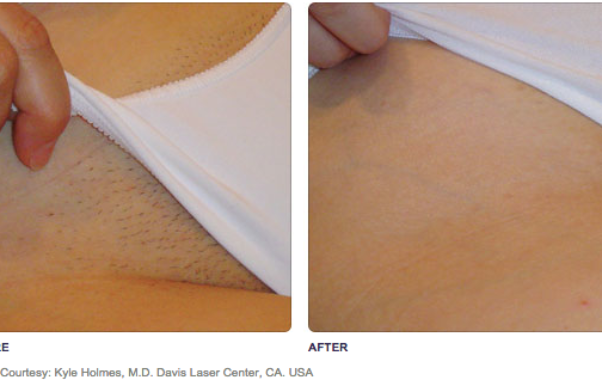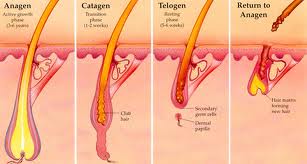
Laser hair reduction and unwanted hair
There are many methods for hair removal, laser hair removal being the most effective and efficient.
Women and men seek hair treatments generally for cosmetic reasons, that sometimes are related to medical conditions (such as hirsutism or hypertrichosis).
Hirsutism is excessive hair growth on the face, arms, and legs, especially in women.
Hypertrichosis, or excessive growth of hair where hair does not normally grow.
Hair growth is dependent on hormones (which are derived from the thyroid, pituitary adrenal and ovarian glands) and genetic predisposition. Hormonal shifts any time during one’s life can produce some new and most likely unwanted hair growth. Oral contraceptives, pregnancy, and menopause are prime examples.
Overactive thyroid, or taking thyroid medication can also drive new hair growth.
Hair is made of a type of protein called keratin. A single hair consists of a hair shaft (the part that shows), a root (below the skin), and a follicle, from which the hair root grows. At the lower end of the follicle is the hair bulb, where the hair’s pigment, or melanin is produced.
Hair growth occurs in three phases:
- Anagen (the hair is actively making pigment in the root of the hair follicle)
- Catagen ( the follicle has shed the hair)
- Telogen (the hair is in the follicle, but is not making pigment in the root of the follicle).
 The only phase of hair growth
that is affected by the laser is the Anagen phase (hair
follicles have more pigment).
The only phase of hair growth
that is affected by the laser is the Anagen phase (hair
follicles have more pigment).
The normal hair growth cycle is 4-8 weeks.
Treatment areas starting at the collar-bone and above are scheduled 4 weeks apart; collar-bone and below are 6-8 weeks apart.
Scheduling treatments too early or too late in the growth cycle may make additional treatments necessary.
The laser works by sending a beam of light through the skin to the hair follicle and heating the hair bulb. There will be some pinkness and swelling around the hair follicle. This is transient and usually lasts 15 minutes to a few hours.
Aloe vera gel or cool compresses may be applied at home for discomfort.
The laser targets melanin (which gives hair it’s pigment), therefore blonde, gray, red, or fine peach fuzz hair will not respond to the laser.
The treatment is mildly uncomfortable. Most clients say it feels like a rubber band snap. However, most of the pain is alleviated with our advanced cooling system.
Most clients require 6-8 treatments to get the maximum benefit of the laser treatment. People with darker skin types may need more treatments.
People with underlying hormonal imbalances, polycystic ovaries, adrenal hyperplasia, use of oral steroids, or a strong genetic tendency for hair growth may also need additional treatments.
You MUST avoid the sun, tanning booths, and artificial tanning creams and spray (on treated area) 2-4 weeks before, during and 2-4 weeks after laser treatment. It is mandatory to use a sunscreen with a TOTAL SUN BLOCK and a SPF 30 or greater.
You should not wax, tweeze, or pluck the hair for 4-6 weeks prior to treatment and after the laser treatment.
Call us with any questions or concerns.
Skin type, hair color and texture, client’s age, financial status, and personal expectation should be considered prior to any intervention.
There are numerous types of lasers available for laser hair removal so the results of the treatment and safety may vary significantly.
At Svetlana’s Skin Secrets we offer state-of-the-art Harmony XL laser for comfortable, safe and effective treatment of unwanted hair and hair reduction.
